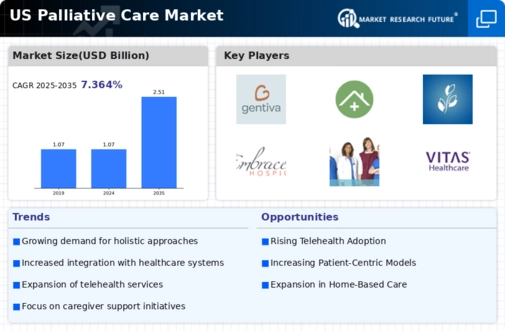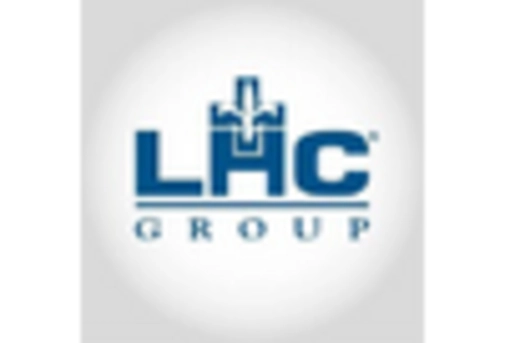The US Palliative Care Market is rapidly evolving, driven by an increasing acknowledgment of the importance of holistic care for individuals facing serious illnesses. This market is characterized by a diverse range of service providers, each vying for a share by offering unique models of care that address the physical, emotional, and spiritual needs of patients and their families.
The competitive landscape is shaped by factors such as regulatory frameworks, reimbursement policies, and demographic shifts that impact the demand for palliative care services. Market players are increasingly focusing on integrating advanced technological solutions, enhancing patient and caregiver education, and building collaborative care models to differentiate themselves.
As healthcare trends shift towards patient-centered approaches, providers are continuously working to improve their clinical outcomes and implement innovative strategies that will strengthen their market position. Gentiva Health Services has established itself as a formidable player in the US Palliative Care Market.
It has a strong focus on providing personalized care tailored to the individual needs of patients. The company is recognized for its comprehensive range of services, meaning that it addresses various aspects of palliative care, including pain management, psychological support, and coordination of care among interdisciplinary teams.
Gentiva’s strategic approach to care management allows it to foster strong relationships with patients, families, and healthcare providers, thereby improving patient satisfaction and outcomes. Its strong presence in both urban and rural settings allows Gentiva to cater to a diverse patient population effectively.
Significant investments in staff training and technology enhancements have enabled Gentiva to maintain high-quality standards in care delivery, reinforcing its reputation in the market. Visiting Nurse Associations of America has carved a significant niche within the US Palliative Care Market.
It emphasizes home-based care solutions that promote comfort and support for patients with serious and life-limiting conditions. The association's commitment to community-oriented care provides them with a substantial market presence, as they often partner with local health systems, hospitals, and community organizations to enhance access to palliative services.
They offer a range of services, including symptom management, caregiver support, and community education, which not only address immediate patient needs but also bolster family involvement and education. The Visiting Nurse Associations of America is known for its strong advocacy on policy issues related to palliative care.
This enhances its influence in shaping the future direction of care in the U.S. The association has also engaged in various mergers and acquisitions, helping it expand its reach and augment its capabilities, thus enabling it to more effectively serve a growing patient demographic seeking palliative care solutions.




















Leave a Comment